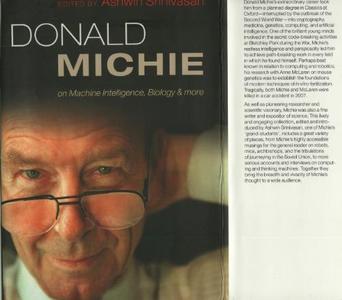
“Donald Michie was an extraordinary character. In a scientific career that spanned nearly 65 years, he was the pioneer in several fields including computing, mouse embryology, transplantation biology, and machine intelligence. Tragically, he died in a car crash in 2007.
Here, Ashwin Srinivasan presents a varied collection of Michie’s writings, from Colossus and computers to mouse genetics and politics. Srinivasan, a computer scientist and graduate student of Donald Michie, introduces each section and brings together an engaging collection of lively essays, revealing Michie’s remarkable personality and painting a picture of his life and interests.”
“Ashwin Srinivasan received his Ph.D. in Electrical Engineering and Computer Science from the University of New South Wales, Australia, in 1991. In 1991 he joined the Turing Institute, Scotland. From 1993, he was a member of the Oxford University’s Computing Laboratory, where he was involved in pioneering applications of logic-based machine learning to difficult real-world problems in biology and chemistry. In 2003, he moved to the IBM India Research Laboratory in New Delhi as a Research Staff Member. He is the recipient of several awards and fellowships, and is regularly invited to present work on machine-assisted methods for scientific knowledge discovery.”
“What then of this particular book? I would like to think of it as telling a story of the many facets of Donald Michie’s extraordinary life. But how does one tell the story of a would-be classicist, cryptographer, biologist, computer scientist, and humanist? I have chosen to do it through his essays and interviews, that are, whenever possible, of a non-technical nature. There are other ways of course. Some would have picked seminal papers. Others, with more courage, would have written a biographical account. I wanted a readable story that would bring out not just his insights, but also some of his own humorous style. In cases where I could not find non-technical descriptions, I have resorted to an edited version of a technical paper. In all cases, I have selected material already published, but which I found unusual, in the hope of being able to interest more than just his friends and colleagues. But the combination of tributes in the Foreword and the introductory notes in each section will give readers a glimpse of some of the other ways in which this book could have been written.”
DOWNLOAD LINK